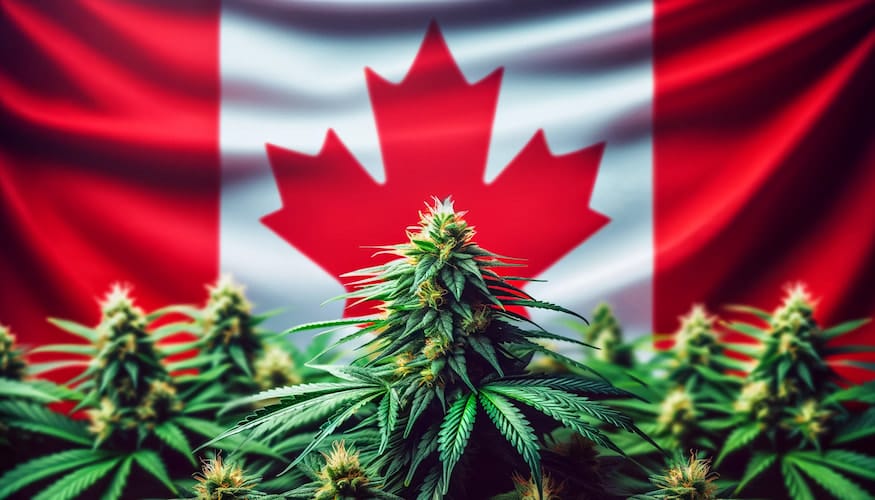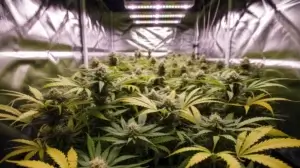BC Bud Strain Review: A Canadian Classic

BC Bud, often referred to as “Beasters,” is a fascinating topic in the world of cannabis. Originating from British Columbia, Canada, BC Bud is not a specific strain but a colloquial term that encompasses several varieties of cannabis that come from this region. Known for its affordability and availability, it has gained a reputation worldwide. The term “Beasters” is often used, particularly in the United States, to refer to commercial-grade cannabis from British Columbia that was prevalent in the early to mid-2000s. In this article, we’ll uncover all the details about about this Canadian cannabis icon.
History and Background of BC Bud
Origins in British Columbia
British Columbia has been celebrated for decades as a prime location for cannabis cultivation. The region’s temperate rainforest climate, fertile soil, and remote areas make it ideal for cannabis growing, allowing both outdoor and sophisticated indoor operations to thrive.
Rise to Prominence
In the 1990s and early 2000s, BC Bud began to dominate the cannabis market in Canada and made significant inroads into the US market, especially along the West Coast and into the Midwest. Its rise was marked by its superior quality compared to other available products at the time, primarily due to advanced growing techniques and the favorable growing conditions in British Columbia.
The “Beasters” Phenomenon
The term “Beasters” originated as a slang term used primarily in the US to describe bulk, commercially grown cannabis from British Columbia that was good but not the top-shelf quality. It was often more accessible and affordable, making it popular among American cannabis users who appreciated its consistent quality and reasonable price. Over time, however, the term has seen less use as the global cannabis market has evolved and more regions have begun producing high-quality cannabis.
Cultivation Characteristics of BC Bud
Growing Techniques
BC Bud is renowned for its cultivation methods, which include a mix of outdoor and indoor growing operations. Hydroponic systems are common in indoor setups, allowing growers to control nutrients and optimize conditions for better yield and quality. Outdoor grows benefit from the natural richness of the British Columbian landscape, leveraging the excellent soil and climate conditions.
Strain Variability
As BC Bud refers to a variety of strains grown in the region, there is significant variability in the effects, flavors, and aromas. Indica, sativa, and hybrid strains from British Columbia are known for their robust terpene profiles and strong effects, catering to a wide range of tastes and preferences.

Cultural and Economic Impact
Economic Contributions
The cannabis industry has been a significant economic driver in British Columbia, contributing to both the legal and illegal segments of the economy. The high demand for BC Bud has supported thousands of jobs and has been a critical part of the local economy for many years.
Cultural Significance
BC Bud is more than just a product; it’s a cultural icon in British Columbia and among cannabis enthusiasts globally. It represents a standard of quality and a pioneering spirit in the cannabis industry. The culture around BC Bud includes a strong emphasis on sustainable and responsible cultivation practices, which has influenced the global cannabis-growing ethos.
Legal Developments
With Canada’s legalization of cannabis in 2018, BC Bud has continued to flourish under new regulations that have helped to formalize its cultivation and sale, boosting its reputation and expanding its market.
BC Bud, or Beasters, exemplifies how regional growing conditions, cultivation practices, and cultural significance can elevate a local product to global renown. Its story is deeply intertwined with the development of the cannabis industry in North America and continues to influence new generations of growers and consumers worldwide.
M-39, a specific variant of BC Bud, is a notable strain that offers an interesting case study in cannabis genetics. This strain is a hybrid between two very influential cannabis varieties, Northern Lights #5 and Skunk #1. Here’s a detailed look at M-39, its characteristics, cultivation traits, and overall impact.
M-39 Strain Overview
Genetic Lineage
M-39 comes from a robust lineage:
- Northern Lights #5: One of the most popular and esteemed varieties of the Northern Lights strain, known for its potent indica effects, fast flowering times, and resinous buds. It provides deep relaxation and is often used for pain and stress relief.
- Skunk #1: An iconic cultivar in its own right, Skunk #1 is famed for its sativa-dominant traits, including an uplifting and energetic high, with a notorious, pungent skunky aroma that is instantly recognizable.
This combination results in M-39, which inherits the vigorous growth traits of Skunk #1 and the potent effects of Northern Lights #5.
Characteristics
- THC Content: Typically, M-39 has a THC concentration ranging from 16 percent to 20 percent. While not the highest, it’s potent enough for effective therapeutic and recreational use.
- Aroma and Flavor: M-39 exhibits a pungent aroma with earthy and woody undertones, likely inherited from its Skunk parentage. The scent is strong, with hints of pine and musk, making it quite distinctive.
- Effects: The strain offers a balanced high, with both cerebral stimulation and physical relaxation. Users often experience a quick onset of euphoria followed by a soothing, mellow body high.
Cultivation Insights
Growing Conditions
M-39 is known for its resilience and is relatively easy to grow, making it a popular choice among novice growers. It can thrive both indoors and outdoors, though controlled indoor conditions often yield the best results due to the ability to manage environmental factors more precisely.
Flowering Time
The strain typically flowers within about six to seven weeks, which is exceptionally fast and is attributed to its Northern Lights heritage. This quick flowering time makes it an attractive option for commercial cultivation, where turnover and efficiency are important.
Plant Characteristics
M-39 plants are usually compact and bushy, a trait inherited from both parent strains. They can handle lower light conditions better than some other strains but thrive under strong light. Regular pruning is recommended to manage their bushy growth and improve air circulation, which helps prevent mold and mildew.
Yield
M-39 yields are moderate to high, depending on growing conditions. Indoor growers can typically expect about 400 grams per square meter, while outdoor yields can be significantly higher under optimal conditions.
Cultural and Historical Context
Popularity in Canada
In Canada, particularly in Quebec, M-39 was extremely popular in the 1990s and early 2000s, and was often referred to as “Beasters” in the United States. It was favored for its ease of growth and fast flowering times, making it a staple among commercial growers.
Decline and Revival
Over time, the popularity of M-39 waned as newer, more potent strains entered the market. However, it has seen a revival among vintage cannabis enthusiasts and growers interested in classic strains. Its historical significance and ease of cultivation continue to make it a subject of interest.
M-39 represents a piece of cannabis cultivation history, combining robust genetics and a blend of effects that have appealed to users for decades. Its role in the development of the BC Bud phenomenon underscores the influence of specific hybrid strains in shaping cannabis culture and industry practices.
The story of M-39 is deeply intertwined with tales of its cross-border smuggling from Canada into the United States. This particular narrative highlights not just the strain’s popularity but also the lengths to which individuals would go to distribute it, reflecting broader themes in the history of cannabis prohibition and trade.

The Cross-Border Smuggling of M-39
The Route and Methods
In the late 1990s and early 2000s, during the height of its popularity, M-39 was often smuggled from British Columbia, Canada, into the United States, with Idaho being one of the key entry points. Smugglers took advantage of the rugged, often remote terrain along the Canada-U.S. border to transport significant quantities of cannabis.
The methods of smuggling were varied and often ingenious, reflecting both the creativity and the desperation of those involved. One common method involved hikers and backpackers who would carry the cannabis across less patrolled areas of the border, often in remote forested regions where they were less likely to encounter law enforcement. These individuals typically used modified equipment and false compartments in their backpacks to conceal the cannabis, sometimes using other, less suspicious items to cover it.
Risks and Challenges
These smuggling routes were fraught with risks. Beyond the legal dangers of being caught with large amounts of illegal cannabis, the physical challenges of navigating this area should not be underestimated. Smugglers often faced harsh weather conditions, rough terrain, and the risk of encounters with wildlife. The area was not only secluded but also lacked any form of immediate help if things went awry, adding a layer of danger to the illicit activities.
Economic Incentives
The reason behind taking such risks was primarily economic. The demand for high-quality cannabis such as M-39 in the United States, where such strains were less commonly grown at the time, made smuggling a lucrative venture. Prices in the US could often be several times higher than in Canada, providing strong incentives for smugglers to transport BC Bud across the border.
Impact on Local Communities
The smuggling of M-39 and other strains of BC Bud had a significant impact on local communities on both sides of the border. In British Columbia, the cannabis industry (both legal and illegal) was a major economic driver, providing income for thousands of individuals. Conversely, in places like Idaho, the influx of high-grade cannabis from Canada posed challenges for local law enforcement and had various social and economic impacts.
Cultural Legacy
The stories of hiking M-39 across the border have become part of the larger lore surrounding BC Bud, painting a picture of a wild, freewheeling era in North American cannabis history. These tales contribute to the mystique of the strain and the region, emphasizing the adventurous and often risky nature of the cannabis trade during a time of stricter prohibitions and heavier penalties.
The smuggling of M-39 into the United States is a chapter in the broader narrative of cannabis that highlights the complexities of prohibition, the ingenuity of those involved in the illicit market, and the ongoing evolution of cannabis as a cultural and economic phenomenon.
BC Bud: Final Thoughts
Suggested Articles
;)
;)
;)




 14 Nov 2025
14 Nov 2025  9 min read
9 min read


 May 29, 2024
May 29, 2024 


RESPONSES (0)
No responses yet. Be the first to respond!